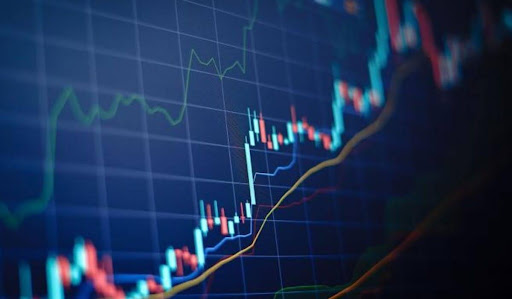Mastering Trading: Implement Strategies for Higher Profit Rates and Become a Successful Trader

A trading strategy is a well-defined plan that Souza, 2019, pp. 14 guides the decisions of a trader on when to enter and exit trades, how to manage risk, and the. shafts to be traded. Having a robust trading strategy is important for one to experience constant success in the markets through making rational predetermined-based decisions devoid of emotions or gut feelings.
Components of an Effective Trading Strategy
A good trading strategy will be comprised of a few major components: entry and exit rules, risk management guidelines, position sizing criteria, and techniques for the analysis of market conditions. The strategy needs to agree with the personal goals, risk tolerance, and available capital of the trader.
Strategies That Adapt to Market Conditions
Markets are dynamic, and because of this, successful traders will continually strive to shift strategy according to altering conditions. This could mean merely adjusting parameters or adding new indicators but it takes one to entirely different strategies with variations in market dynamics.
Selecting the Right Forex Trading Strategy
Choosing the best forex trading strategy depends on various factors, including your trading style, risk tolerance, and time commitment. Some popular forex trading strategies include:
Trend Following
One of these is trading in the direction of established trends. Traders use technical indicators like moving averages and trend lines to point out trends and subsequently make associated trading decisions.
Range Trading
Range trading exploits markets moving sideways in a defined price range. Brokers buy at the support levels and sell them at obstruction levels to gain from the expected cost motions.
Breakout Trading
Breakout traders are the traders who strive to get into positions at the point when such price breaks out of a previously established range or pattern and then moves sharply in the direction of the breakout.
News Trading
This strategy incorporates trading on the release of economic news and geopolitical events that can move the markets. Quick decision-making is required to have a good understanding of how various news events impact currency pairs.
Becoming a successful trader requires a combination of knowledge, skills, discipline, and experience. Here are some critical stages to help you on your excursion:
Educate Yourself Continuously
The financial markets are complex and ever-changing. Successful traders commit to ongoing education, staying updated on market trends, economic indicators, and new trading techniques.
Develop a Trading Plan
A comprehensive trading plan outlines your trading goals, risk management rules, and specific strategies. It serves as a roadmap for your trading activities and helps maintain discipline.
Practice Risk Management
Proper risk management is crucial for long-term success. This includes using stop-loss orders, diversifying your portfolio, and never risking more than a small percentage of your trading capital on a single trade.
Keep a Trading Journal
Maintaining a detailed trading journal allows you to track your trades, analyze your performance, and identify areas for improvement. It’s an invaluable tool for refining your strategies over time.
Master Your Emotions
Emotional control is essential in trading. Poor decision-making can result from greed and fear. Successful traders learn to stay calm and stick to their strategies, even in volatile market conditions.
Skills Required to Become a Successful Trader
To excel in trading, you’ll need to develop and hone several key skills:
Analytical Skills
Traders must be able to analyze vast amounts of information quickly and accurately. This includes interpreting charts, understanding economic data, and identifying potential trading opportunities.
Discipline and Patience
Successful trading often requires waiting for the right opportunities and sticking to your trading plan, even when it’s tempting to deviate.
Adaptability
Markets can change rapidly, and successful traders must be able to adapt their strategies accordingly. This includes being open to new ideas and willing to admit when a particular approach isn’t working.
Risk Management Skills
Understanding and effectively managing risk is crucial. This includes knowing how to size positions appropriately and when to cut losses.
Technological Proficiency
Modern trading relies heavily on technology. Traders should be comfortable using trading platforms, charting software, and other technological tools.
Best Profit-Taking Strategies to Enhance Your Trading
Implementing effective profit-taking strategies is crucial for maximizing returns and protecting gains. Here are some proven approaches:
Trailing Stop Loss
This strategy involves adjusting your stop-loss order as the trade moves in your favor, allowing you to lock in profits while still giving the trade room to grow.
Scaling Out
Instead of exiting a position all at once, scaling out involves taking partial profits at predetermined levels. This allows you to secure some gains while leaving a portion of the position open for potentially larger profits.
Fixed Ratio Profit Taking
This approach involves taking profits at predetermined price levels based on a fixed ratio of your initial risk. For example, you might take partial profits when the trade reaches a 1:1 risk-reward ratio, and then again at 2:1 and 3:1.
Time-Based Exit
Some traders use time-based exits, closing positions after a specific duration regardless of profit level. This can be useful in range-bound markets or when trading based on short-term patterns.
Indicator-Based Exits
Technical indicators like the Relative Strength Index (RSI) or Moving Average Convergence Divergence (MACD) can be used to signal when to take profits, especially when a trend might be losing momentum.
Frequently Asked Questions:
How long does it take to make money out of trading?
Becoming consistently profitable usually takes months to several years of very focused practice and learning. Timing is dependent upon the level of background knowledge to begin with, time commitment, and ease in developing the skills required.
What percentage of traders are successful?
This can be estimated to be only about 10-20% in terms of the exact figures achieved by traders maintaining consistent profitability. It simply underscores proper education, strategy development, and risk management as an important part of trading.
To begin trading, how much capital do I require?
The amount of capital demanded varies from one market to another and with risk tolerance as well. Where some brokers allow opening an account for a very minimum deposit, having at least a few thousand provides flexibility and better choices in risk management options.
Is it conceivable to earn enough to pay the bills from exchanging?
Yes, one can live off of trading; however, it requires high skill levels, discipline, and capital. Many successful traders started part-time while maintaining other sources of income before transitioning to full-time trading.
How important is psychology in trading success?
Psychology is attributed to trading and is critical to success. Many successful traders allude to control over emotions, discipline, and stress handling as being as important as knowledge about technical skills or the analysis itself.
Conclusion
Mastering trading for consistent profitability is a difficult but rewarding journey. It is where knowledge, skill, discipline, and experience all meet. Your ability to create solid trading strategies, based on proper education and practice of sound risk management policies, will prepare you for more successful opportunities in financial markets if you are maturing in trading skills.
Keep in mind that to become a successful trader is a long process. Be easy on yourself, and every mistake you make is a lesson learned. If you are persistent enough and travel down the right road, then you can work your way toward your trading goals and maybe even toward making a career out of trading.





